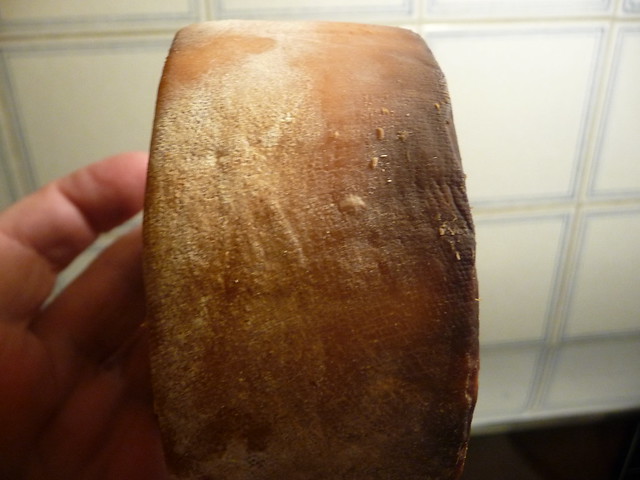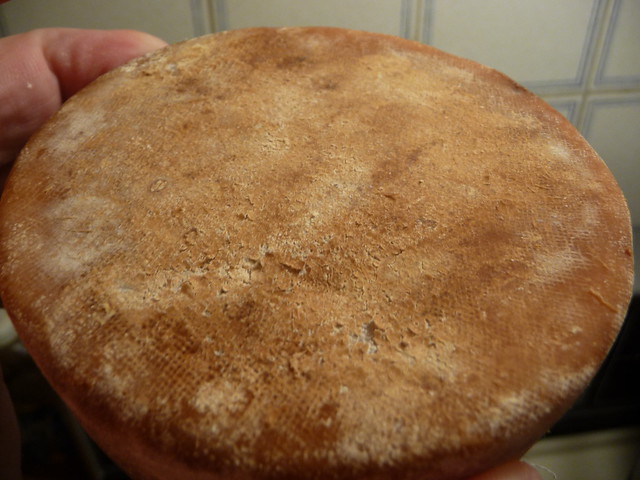Given all of the info and discussion on this forum (and brewing hobbyist overlap), it surprises me that there is very little regarding beer-soaked cheeses. And most of it is cautionary, like "don't use beer in the curds or you will get holes from yeast" or "washing rind with beer can lead to overwhelming bready flavors". OK, that's cool. But I am still interested in the possibilities of immersing cheese in beer and also hard cider.
So, I thought I would give an update on my current experiment. As mentioned above, I took a previously pressed and brined 1-lb cow's milk 'tomme' and soaked it in a strong stout for 3 separate 12-24 hr periods. I guess I did not let it dry enough before I vac-bagged it, because a lot of beer later came out into the bag. So I un-bagged it and was letting it dry in my 'cave' for a bit. Anyhow, with one thing and another I left it there for a while and it seemed to be fine. But eventually, mold began to form. I guess I should have expected this, given that I inoculated the milk with some rind slurry solution and also have been spraying/wiping its neighbors from the same batch of cheese.
So, basically with a mixture of experimentation and laziness I allowed it to continue. So now I have rather a different critter on my hands. It smells good, both beer-y and cheese-mold-y (in a good way, damp basement GC smell) and it appears mostly the same mold as the other cheeses has arisen (no blue/green or other nasties).
As I mentioned above, this is one of two cheeses I cut in half, pressing the cut sides lightly afterwards, and you can clearly see that the cut side has absorbed a lot more dark beer, and also has less light mold. Don't know what to expect from this - it has aged 6 weeks or so now, am thinking of tasting it in a month or two.

Here you can clearly see the gradation between the darker cut side and the others, which have more mold.

Detail of the cut side showing the darker color with some bits of orange and white/brown mold. I don't know if the brown color really represents a different kind of mold, or it it is just the influence of the beer.

Detail of the uncut side with tighter rind, less beer color. Some of the top layer of mold is kind of flaking off, though?